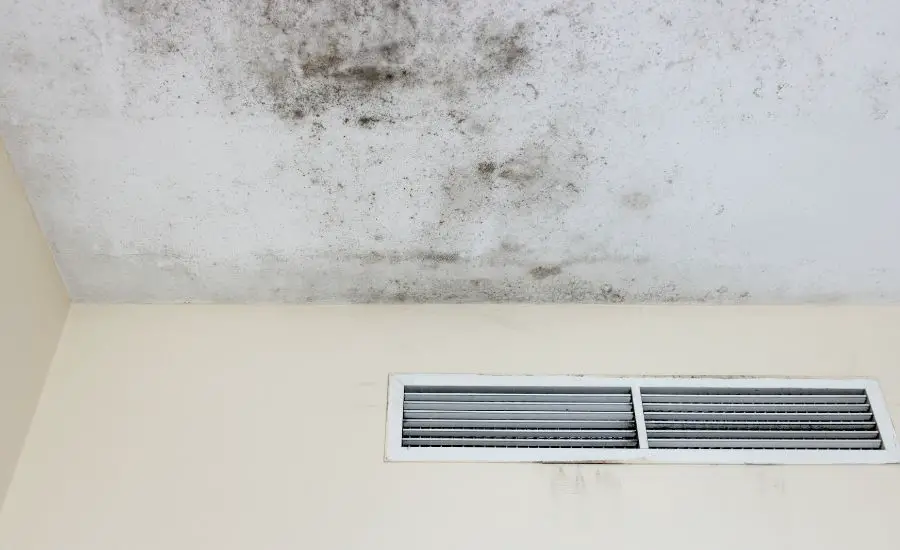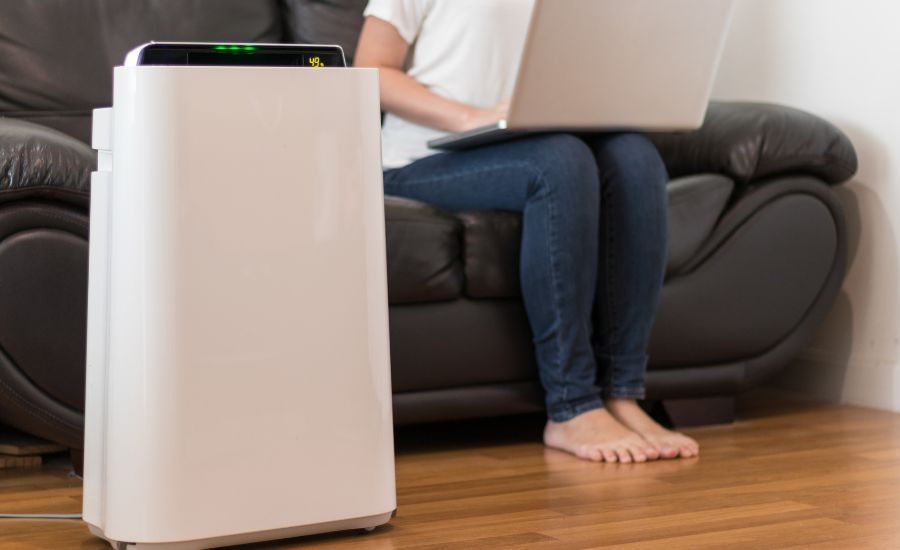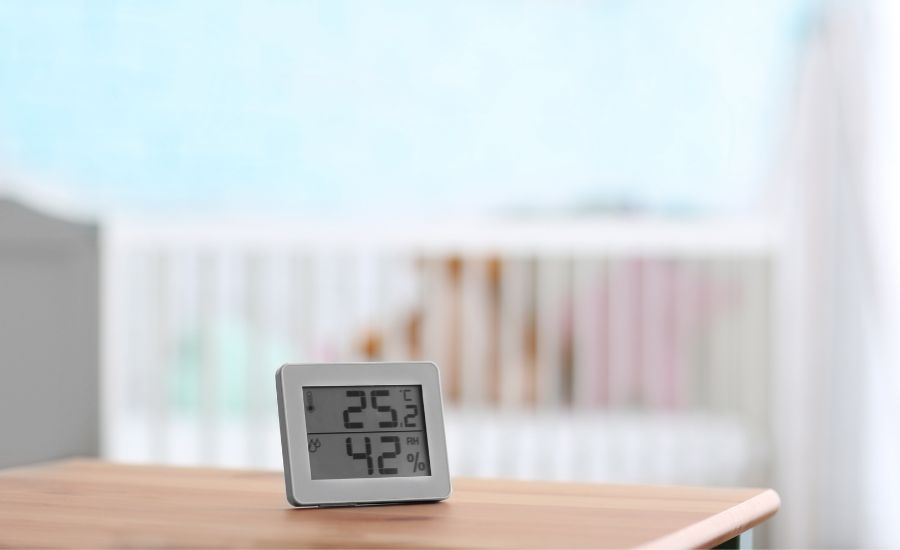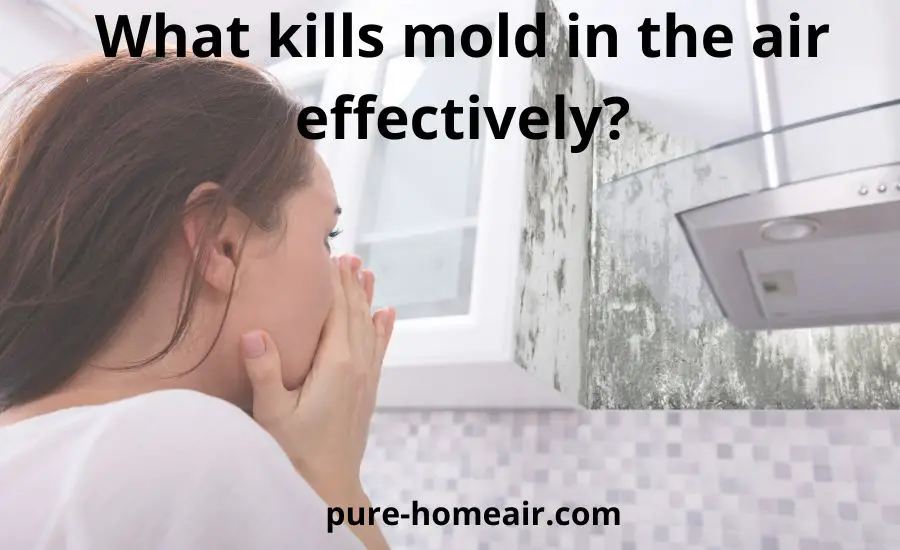Mold is a persistent problem that can affect the quality of air in our homes and pose risks to our health. Understanding the nature of mold, its sources, and effective methods for eliminating it is crucial for maintaining a safe and healthy indoor environment.
In this article, we will explore the methods of how to kill mold spores in the air, starting with an overview of what mold is and where it comes from. We will then delve into various techniques for getting rid of mold, as well as the preventive measures that can be taken to prevent its appearance.
By the end, you will have a comprehensive understanding of how to get rid of mold spores inside your house and ensure breathable, clean air in your home.

Understanding mold
Mold is a common household problem that can cause various health issues and property damage. It refers to a type of fungi that reproduces by producing tiny spores.
A mold spore is a microscopic reproductive structure produced by mold fungi. Mold spores serve as a means of reproduction for molds and can survive in various environmental conditions.
When mold spores land on suitable surfaces with sufficient moisture and nutrients, they can germinate and grow into new mold colonies.
These mold spores are invisible to the naked eye and can float through the air, making them easily inhalable.
Once inhaled, mold spores can cause respiratory concerns, allergic reactions, and other health complications, particularly for individuals with mold allergies or compromised immune systems.
Sources of mold spores
Mold spores exist naturally in the environment, and they are always present in the air to some degree. However, the growth of the mold spores becomes a concern when the spores find suitable conditions to thrive. Mold requires moisture, warmth, and organic matter to grow.
Common sources of surplus moisture in homes include plumbing leaks, roof leaks, condensation, and high humidity levels.
When these conditions are present, mold can flourish on various surfaces, such as walls, ceilings, carpets, and furniture.
Methods of getting rid of mold
When confronted with a mold problem, it is crucial to address it promptly to safeguard your health and preserve your property. Here are several effective methods for removing mold from the air, such as improving ventilation, using an air purifier, and so on:
Improve ventilation
Proper ventilation is essential to reduce moisture levels indoors.
Open windows, use exhaust fans in bathrooms and kitchens, and ensure adequate airflow throughout your home.
Allowing fresh air to circulate helps prevent mold spores from settling and accumulating in the air.
Control humidity
Maintaining optimal humidity levels is crucial to prevent the growth of mold spores.
Use dehumidifiers in damp areas, and consider investing in air conditioning units that have dehumidifying capabilities.
Monitor and address any moisture issues promptly to discourage growth.
Remove visible mold
If you have visible growth of mold spores, it is important to remove them as soon as possible.
Wear protective gear, such as gloves and masks, to avoid direct contact with mold spores.
Use a mixture of water and detergent or a specialized mold cleaner to scrub the affected areas thoroughly. Dry the surfaces completely afterward to prevent further growth.
Air purifiers
A high-quality air purifier with HEPA air filters can be effective in capturing airborne mold spores.
These air filters are designed to trap particles as small as 0.3 microns, making them suitable for capturing even the tiniest mold spores, and other volatile organic compounds.
Consider placing air purifiers in rooms with mold problems or where you spend significant time.

Professional mold remediation
In cases of severe mold infestation or when dealing with extensive mold growth, it is advisable to seek professional mold remediation services.
Certified professionals have the expertise and specialized equipment to effectively kill mold and restore a healthy indoor environment.
How to get rid of mold spores in the air
To effectively get rid of mold spores in the air, several measures can be taken, including the use of an air purifier, proper ventilation, and mold remediation. Here are some steps you can follow:
Remove mold sources:
Identify and address any areas of growth of mold in your home.
This may involve cleaning mold-infested surfaces using appropriate cleaning solutions or seeking professional mold remediation services.
By eliminating the mold source, you can kill mold spores in the air.
Maintain indoor air quality:
Regularly clean and vacuum your home to minimize dust and allergens, including mold spores.
Use vacuum cleaners with HEPA air filters to get rid of mold spores in the air.
Control humidity levels:
Mold spores thrive in damp environments.
Keep indoor humidity levels below 50% by using dehumidifiers or air conditioners.
Fix any leaks or water damage promptly to prevent the growth of mold.
Consider air filters:
Using air filters in your HVAC system or standalone air purifiers with HEPA’s high-efficiency particulate air filters can further trap and remove mold spores from the air.
Regularly clean your air purifier or replace your filters as recommended by the manufacturer.
Practice mold prevention:
Take proactive measures to prevent the growth of mold in your home.
This includes promptly repairing any water leaks, using mold-resistant materials in areas prone to moisture (e.g., bathrooms, basements), and ensuring proper ventilation in these areas.
Cleaning with mold-killing solutions:
Using mold-killing solutions, such as bleach, hydrogen peroxide, or commercial mold cleaners, can help kill mold spores on hard surfaces. Follow the product instructions and wear protective gear when using these solutions.
Dry out affected areas:
Mold thrives in moist environments, so drying out areas where the mold spores stay. By reducing moisture levels through proper ventilation, dehumidification, or fixing water leaks, you can effectively kill mold spores in the air.
By combining these strategies, you can effectively get rid of mold spores in the air and create a healthier indoor environment. Remember, addressing the root cause of mold growth is essential for long-term prevention and improved air quality.
Measures to prevent mold spores from appearing
Preventing the growth of mold spores is crucial for maintaining a healthy indoor environment. Here are some preventive measures to consider:
Monitor and address moisture issues:
Regularly inspect your home for any signs of water leaks, condensation, or moisture buildup. Promptly repair any leaks and address moisture issues to prevent mold-friendly conditions.
Use mold-resistant materials:
When renovating or building, choose mold-resistant materials, such as mold-resistant drywall, paints, and caulking. These materials are designed to discourage growth and provide added protection against its appearance.
Properly ventilate areas prone to moisture:
Install exhaust fans in bathrooms, kitchens, and other areas prone to excess moisture. Ensure that these fans vent to the outside rather than into the attic or other enclosed spaces.
Regularly clean and dry:
Regularly clean and dry surfaces prone to moisture, such as shower walls, sinks, and windowsills. Use proper ventilation and wipe away any moisture to prevent mold growth.
Monitor indoor humidity:
Use a hygrometer to monitor indoor humidity levels regularly.
If the humidity exceeds 50%, employ dehumidifiers to reduce moisture levels and discourage the growth of mold, since mold grows faster in moist air.
By implementing these preventive measures and employing appropriate remediation techniques, you can effectively combat mold problems.
Protect your health, preserve your property, and enjoy clean air by staying vigilant against indoor mold growth and taking prompt action when necessary.

Conclusion
In conclusion, tackling mold in the air requires a combination of prevention and remediation methods. By implementing proper ventilation, controlling humidity levels, removing visible mold, and using air purifiers, we can effectively get rid of mold spores in the air and improve indoor air quality.
Taking proactive steps and promptly addressing moisture issues are essential in preventing the growth of mold spores. With these measures in place, we can create a healthy and mold-free environment, safeguarding our well-being and preserving the integrity of our homes.
Frequently asked questions
What pulls mold out of the air?
Air purifiers are effective in removing mold spores from the air. These devices, particularly those equipped with high-efficiency particulate air HEPA filters, can capture and trap airborne mold spores, significantly reducing their presence in the indoor environment.By continuously circulating and filtering the air, an air purifier helps improve air quality and remove mold spores that may contribute to the indoor growth of mold.
What permanently kills mold?
To permanently kill mold, thorough mold remediation is necessary. Mold remediation involves identifying and addressing the source of moisture that promotes the growth of mold spores, such as leaks or excessive humidity.It is important to note that simply killing mold spores is not enough, as they can still cause issues if they remain in the environment. Therefore, a comprehensive approach that includes addressing the underlying moisture issue and removing mold-infested materials is essential for permanent mold removal.


